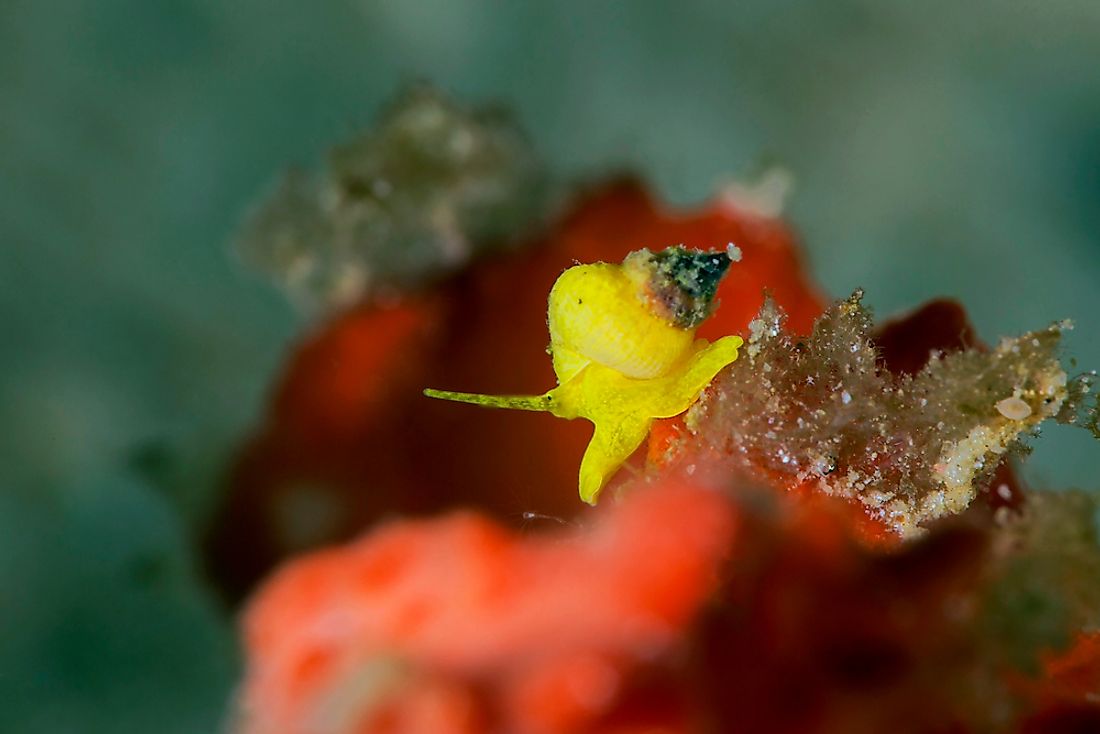Sea Snail Facts - Animals of the Oceans

Sea snails refer to the kind of snails that exist in saltwater and are classified under the class Gastropoda. They belong to this taxonomic class together with other types of snails such as the land snails and freshwater snails. Sea snails can be found throughout the world's oceans.
Physical Description
A sea snail has a soft body that is usually protected by a shell. Most shells are spirally coiled while some sea snails, commonly called the impetus, have a conical shell. Sea snails are hard to be preyed because of their hard-protective tank. Besides, they are considered to be herbivorous since most of them feed on sea plants. A small portion, however, is omnivorous. A sea snail does not have teeth; its mouth consists of a hard ribbon instead of teeth. It uses this ribbon (a radulus) to grind and tear food. Sea snails move by their "foot" which is a muscular organ beneath their bodies. Their motion involves making ripping motion and leaving behind mucus that cover the area in which the snail is moving along. Moreover, these animals have gills that are situated in the cavity of the mantle that they use them for breathing.
Diet
Most sea snails are herbivores implying that they entirely feed on sea plants. The algae plant is the most popular source of nutrient among the sea snails. Omnivorous sea snails feed on small sea animals.
Habitat and range
There are different types of sea snails, and thus they exist in diverse habitats. They live across the globe ranging from the Arctic deep north through the equatorial region down to the Antarctic oceans. They are also known to inhabit a vast area from the seashore to deepest ocean trenches.
Behavior
Sea snails are widely known to be one of the slowest living animals; their name has even been used to refer to slow people or activities. Snails produce a white slime whenever they move and feel their surrounding environment by touching objects using their tentacles. Most sea snails do courtship as part of their behavior in mating. They usually feed on seaweed and algae except for the scavengers that feed on small sea animals. Sea snails have a hard operculum that they use to hide under when they face an attack.
Reproduction
The reproductive systems of snails (gastropods) vary significantly from one class to another. Consequently, their reproductive strategies vary. In marine gastropods, there exists the male and female gender; hence, their reproduction involves fertilization of a female egg by the male sperm. Gastropods undergo an internal kind of fertilization, but a few species undergo external fertilization.











